Around 2 in 3 people use a music streaming service to listen to music signaling people craze for such apps.
In the world of music streaming, staying ahead of the curve means understanding what’s shaping the future.
This is why, people often ask: “What are the latest trends in the music streaming industry?”
While it is a significant question to ask. It is also important to focus on the music streaming trends that change the game of user experience, offer innovative features and change our music interactions.
In this post, we will discover the most popular trend in music streaming apps, and how these are expected to reshape music in 2025 in an exciting way.
Market Research and Growth of the Music Streaming App Industry
The global music trends show that the music streaming sector has steadily grown to dominate the music market, now responsible for over 65% of global music revenue, as indicated by the IFPI Global Music Report.
-
- One-third of all money made by music streaming applications comes from the US.
- Streaming services based on total subscribed users, Spotify is the most used by subscribers.
- Nonetheless, it is YouTube that has an overpowering engagement, boasting a whopping 2.5 billion users.
- Total worldwide revenue from music streaming stands at $17.5 billion.
- Paid subscriptions make up 23% of the total music streaming market.
- An astounding 78% of people use streaming services for listening to music, with over 600 million people subscribed to a music streaming service.
- Millennials and Gen Z represent core demographics that significantly influence trends in music streaming apps like Spotify and Apple Music.
These younger listeners are drawn by personalized features and the convenience of accessing vast music libraries on demand.
Now that we’ve understood the market capacity of these industries, let’s dive into the top trends in music streaming apps, whether you want to create a music app or are just curious to know them, we are about to discuss a lot.
Trends in Music Streaming Apps and Their Evolution in 2025
Over the years, music streaming app trends and their evolution have drastically shifted how people engage with music.
In the earlier days, apps were mainly made to give access to natural music libraries; nowadays, these are platforms for delivering a hyper-personalized interactive experience.
Let’s explore the top seven music streaming app trends that are aiding the future.
1. AI-powered personalization
Artificial intelligence (AI) and machine learning form one of the hallmark changes in growing music streaming app trends in 2025 creating personalized user experiences.
Music applications like Spotify and Apple Music use AI to analyze a user's preference and offer personalized playlists, song recommendations, and even tailor-made radio stations.
Read More: Create an App like Spotify
1.1 Purpose and Benefit
AI-powered personalization aims to enhance engagement by letting listeners discover new music that harmonizes with their personal tastes.
Artificial Intelligence provides users with playlists based on listening histories, moods, and genres.
With all this, users can use music streaming platforms for a longer time and enjoy a more customized musical experience.
1.2 Why It’s Crucial
These services blend user preference with huge tracks and growing artists, changing the experience and making it customized.
These not only exemplify the evolving music streaming app trend but show a seismic shift in the way we consume music.
Can you believe it? Spotiy’s Discover Weekly alone boasts over 40 million users, showcasing the effectiveness of customized in gaining loyalty and music discovery.
2. Integrating Social Features in Music Streaming Apps
Well, music isn’t just a solo experience, it’s meant to be shared.
Music apps with such features make music a social affair, allowing listeners to connect without worrying about their physical location.
Apps like Resso enable users to create and share playlists and allow hosting live-streaming sessions with friends.
These growing trends in music streaming app development will create more interactive experiences for users than ever before.
As, it allows people to experience hanging out with friends, simply by allowing them to share favorites and discovering tracks together.
2.1 Purpose and Benefits
These features are growing and taking space in music apps enhancing social engagement, allowing them to discover music together, chat about new releases, and even share their tracks with their friends.
Not only with such features you stand out, but utilizing them will allow you to open up new monetization models for your music app by attracting and keeping more users.
After all, the more interactive the platform, the more time users will spend on your app, making it important for retaining users and growth.
2.2 Why It's Crucial
As we’ve seen, music streaming trends are going from solitary listening to a more communal experience.
The rise of social sharing features in apps shows the importance of human connection, even in the digital realm.
For music streaming platforms, embracing this shift towards social engagement is not just a nice to have but a strategic move to get an edge over their rivals.
3. Enhanced Audio Quality and Immersive Experience
Audio quality makes every song a richer, fuller, and fun experience.
Don't believe us, take the example of TIDAL Music which offers high-resolution audio and lossless formats as now much sought for.
As audiophiles crave more such apps, it’s best to make an app like TIDAL Music.
Innovation is key and the music streaming apps that embrace these trends will undoubtedly lead the way.
Consequently, Apple Music has entered the trend, to produce a three-dimensional listening experience.
3.1 Purpose and Benefits
The shift towards high-quality audio has driven a notable rise in subscriptions to premium plans.
A recent survey revealed that high-fidelity audio plans saw 20% growth over the past two years as listeners sought out that "front-row" experience, even through headphones.
3.2 Why It's Crucial
Unlike compressed MP3s, these high-quality streams preserve every detail, making listeners feel as if the artist is performing right there beside them.
This difference isn’t going unnoticed. One music lover noted, “Switching to lossless audio made me feel like I was hearing my favorite songs for the first time.”
4. Virtual Reality and Metaverse Integration
The next growing trend in the music streaming industry is the metaverse.
It’s a virtual world where users can attend concerts, interact with fans, and connect with artists in immersive, innovative ways.
Platforms like Fortnite and Roblox have hosted virtual concerts by artists like Travis Scott and Ariana Grande. These events allow fans to experience live music in a fully interactive, virtual environment.
4.1 Purpose and Benefits
For fans, it feels as though they have "front-row seats from their living room," providing a new and exciting experience for the audience.
With renowned artists like Lil Nas X conducting virtual events, these emerging trends in music streaming apps are transforming the music landscape by merging it with digital, immersive experiences, fundamentally changing what music streaming services can offer.
AR/VR app development is enabling users to enjoy live concerts and virtual events from the convenience of their own homes, altering the way fans engage with music and artists.
4.2 Why It's Crucial
Forecasts suggest that the market for virtual music experiences is set for swift expansion, attracting more artists and users to delve into this innovative realm. Although, having such trends might expand your cost of music app development but its worth it.
Alternatively, Streaming platforms are now testing VR integration, allowing users to immerse themselves and interact with music in dynamic and engaging ways.
5. Web3 Streaming and Non Fungible Tokens
With the advent of Industry 4.0, it is seen that Web3-related technologies and NFTs are becoming an emerging trend in music streaming apps.
Modern music streaming apps are here to change the game by allowing artists to make known and sell their music and digital media via NFTs, with engagements with their fans.
Audius allows artists to distribute their music and connect with fans on a decentralized streaming service without intermediaries.
Fans can flatteringly purchase NFTs for exclusive content or tickets to concerts and shows.
5.1 Purpose & Benefits
Web3 technology represents part of the decentralized Internet that lets artists and listeners govern the value generated by music directly.
By eliminating traditional intermediaries like record companies, artists may easily access their audiences and keep a larger share of their money.
5.2 Why It's Crucial
Musicians can offer unique digital versions of their music to the fans through NFTs.
The tokens are not just limited to song content but can also include digital artifacts, concert tickets, and VIP access.
For example, Kings of Leon recently released the digital album in NFT format, allowing fans a chance to own a piece of that album's history while providing another layer of incentives.
See, we told you it is worthwhile. So if you plan to launch a new music business, then leveraging advanced technologies like AI and Web3 will be a great idea.
6. Sustainability and Ethical Streaming
With the increasing visibility of environmental effects on digital services, we are talking about one of the most popular trends in music streaming apps that makes use of these kinds of sustainable techniques.
It also lowers data and carbon footprint with Deezer Green Mode, streaming at lower bitrates.
Plus, it caters to the environmentally aware party and indulges practitioners in a good listening experience too.
6.1 Purpose & Benefits
Sustainable streaming aimed at minimizing environmental harm on digital services.
Using less data and fewer bitrates helps platforms to emit minimum carbon emissions towards a greener digital world with no sacrifice of the user experience.
6.2 Why It's Crucial
This differentiating approach allows platforms a chance to show some environmental stewardship.
In an ever-greener market, creating an app keeping such trends in mind means not only shedding the ecological footprint but also effectively attracting the sustainability-minded user.
7. Gamification
Music streaming apps are now using the element gamification to spice up the listening manner. Badges, Challenges, and Rewards are used by these apps to keep users entertained.
In a race for attention, these biggest trends in the music-streaming industry will decide which platforms will win.
A Spotify Wrapped is a perfect scenario for gamification.
Users always get a tailored recommendation of what they listen to throughout the year including analytics and shareable graphs.
7.1 Purpose & Benefits
These case studies of gamification in music streaming show us that by introducing interactive features, problems are solved, and user engagement increases.
It guarantees that users keep coming back to repeat their satisfaction and sense of achievement putting the platform in the spotlight.
7.2 Why It's Unique
Listening to music will be this awesome, active, and interactive experience instead of a gamified dice that used to be a passive experience.
It encourages user motivation and loyalty to make the music listening experience a fun, rewarding activity that users want to share with others.
8. Multilingual and Regional Content Localization
Since music streaming apps have started offering localized content, playlists, and recommendations suited for tastes from different areas, they are turning to audiences across the world.
An example of this, "Afro Beats Hits" on Apple Music is a great example of this music streaming app trend aimed at ensuring users feel their roots.
8.1 Purpose and Benefits
Localization of content is one-way music streaming platforms can offer localized playlists, equivalent recommendations, and desired features alongside local tastes and cultures.
This aspect allows for a more personalized experience for users, which leads to greater user satisfaction and universal appeal, making it one of the biggest music streaming industry trends changing the way we listen to music.
8.2 Why It’s Unique
The relevant different ways in which it respects cultural diversity and makes sure that every single user has a sense of relevance, no matter where he or she is located.
Coupled with the relevant content that beats with pulses of regional identities is an exceptional opportunity for platforms to build deeper emotional connections with users around the globe.
How JPLoft Can Help in Developing a Music Streaming App
JPLoft stands out as a leading music streaming app development company, offering tailored, future-ready solutions to meet the demands of today’s evolving market.
At JPLoft, we specialize in full-cycle app development, offering tailored solutions that incorporate AI, AR/VR, and cutting-edge features. Our seasoned developers work closely with clients to create platforms that meet the growing demands of modern music enthusiasts.
Innovative Solutions JPLoft Offers:
-
Social Features Integration: Collaborative playlists, live listening sessions, and user engagement tools.
-
High-Quality Audio Capabilities: Support for spatial and lossless audio to meet the demand for premium sound quality.
-
Monetization Tools: Integrated payment options, such as artist tipping and subscription models, that allow for direct fan-to-artist support.
JPLoft’s portfolio is built on scalable, secure solutions that align with the latest music streaming app trends, helping clients succeed in a competitive market.
From social features to sustainability, JPLoft’s expertise makes them the partner of choice for developers looking to launch innovative, impactful music streaming apps.
Conclusion
As music streaming continues to transform, the industry is driven by trends like AI personalization, social connectivity, high-quality audio, and even the integration of Web3 and NFTs. These innovations are not only enhancing user experiences but also reshaping how artists and fans interact.
As we look at the future of music streaming app trends, platforms must keep evolving to stay relevant. With demand for immersive, sustainable, and direct artist-to-fan connections growing, streaming platforms are setting the stage for a future where music isn’t just heard—it’s experienced and shared on a deeper level.
JPLoft stands ready to bring these trends to life with advanced development solutions, empowering companies to create music apps that meet these evolving demands and capture the hearts of music lovers worldwide.
FAQs
As of now, Spotify is the most popular music streaming app globally, with over 500 million active users and a significant market share in the streaming industry.
The future of music streaming will be marked by continued advancements in AI and personalization, social integrations, immersive experiences (such as VR concerts), and a shift towards higher-quality audio and podcasts. Sustainability and direct artist-to-fan monetization are also expected to play a key role.
Apple Music and Amazon Music are both experiencing significant growth. Apple Music recently exceeded 100 million subscribers, and Amazon Music is seeing rapid adoption due to its integration with Amazon Prime.
AI-driven personalization, social features, high-quality audio, immersive VR concerts, and Web3 technologies are key music streaming app trends fueling growth.
These trends will boost engagement by offering personalized, interactive experiences, along with high-quality audio and social connectivity.
Spotify currently leads the music streaming industry, maintaining a dominant position with its extensive catalog, personalized playlists, and global reach.
Music streaming has been incredibly successful due to its accessibility, convenience, and vast selection of music. With personalized playlists, high-quality audio, and social integration, it provides users with a tailored, engaging experience that traditional music formats couldn't match.





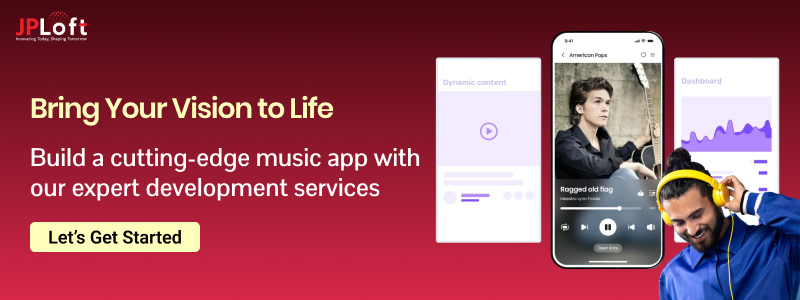
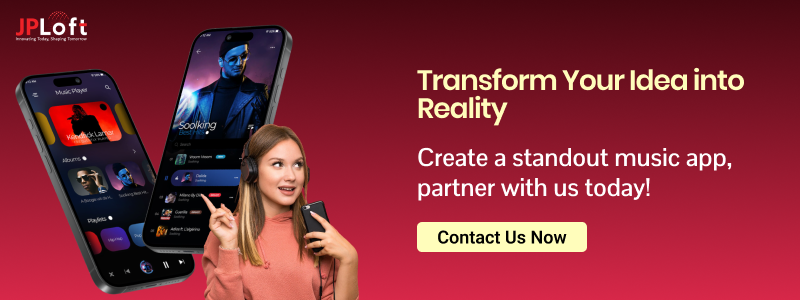

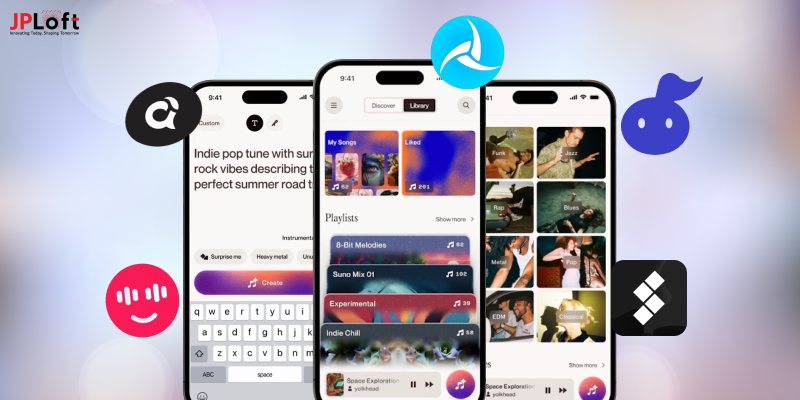
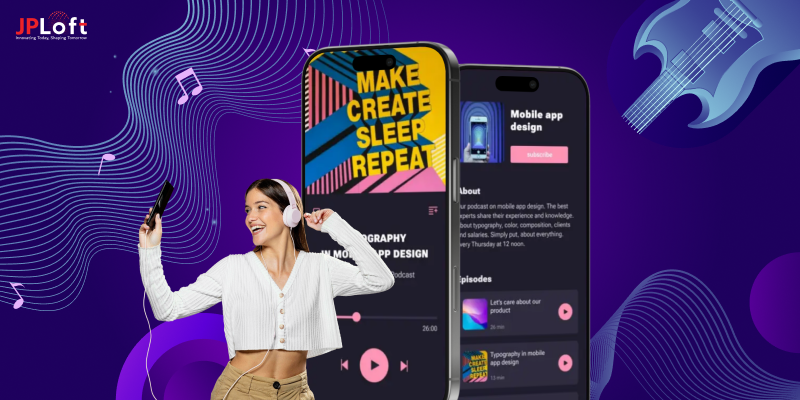
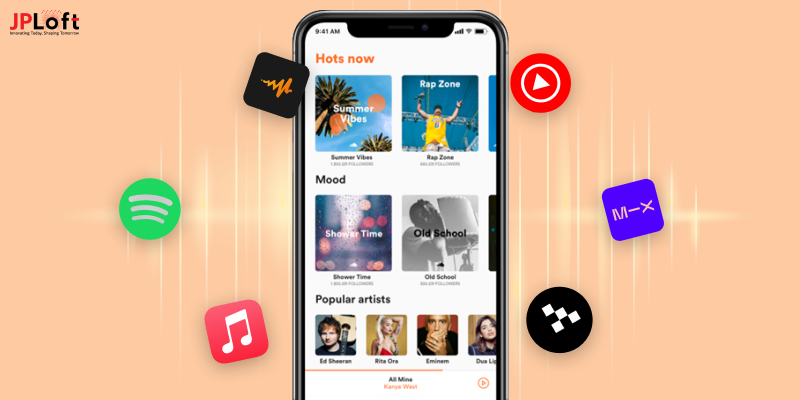



Share this blog